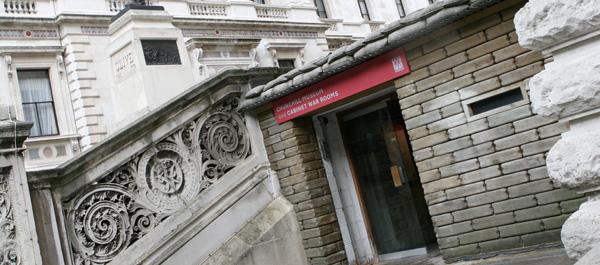
NOVEMBER 2009 — Winston Churchill was understandably miffed when he learned the news. In the midst of the Battle of Britain, the prime minister was told for the first time that the underground command center in London known as the Cabinet War Rooms, where he and other high-ranking government officials had been seeking refuge during air raids, was not actually “bomb-proof.”
“The PM said I had ‘sold him a pup’ in letting him think that this place is a real bomb-proof shelter, whereas it is nothing of the kind,” wrote Patrick Duff, a senior civil servant, in a letter to one of Churchill’s cabinet secretaries in September 1940. Duff insisted that it was “totally impracticable” to retrofit the relatively shallow, 10-feet-deep basement, which before the war had served as a storage room for the Office of Works. Churchill, needless to say, was not pleased.
This alarming revelation—the focus of a new exhibit, open at the Cabinet War Rooms through next summer, that commemorates the 70th anniversary of the site entering service—reveals a great deal about Britain’s haphazard, rushed response to the onset of war. But it also hints at Churchill’s remarkable fortitude.
“This whole episode tells us a lot about Churchill’s personal bravery,” Cressida Finch, the exhibition’s curator, told the BBC. “Although he was angry on learning that the war rooms were not completely safe, he was determined not to leave central London and be seen as abandoning Londoners.”
After several near misses during the Blitz, engineers tried to strengthen the building by adding a huge concrete slab to the ceiling, but experts were never certain anyone in the war rooms would have survived a direct hit.
In spite of the danger, an undaunted Churchill continued to use the underground warren of offices in central London for the remainder of the war.
This article originally appeared in the November 2009 issue of World War II magazine.




